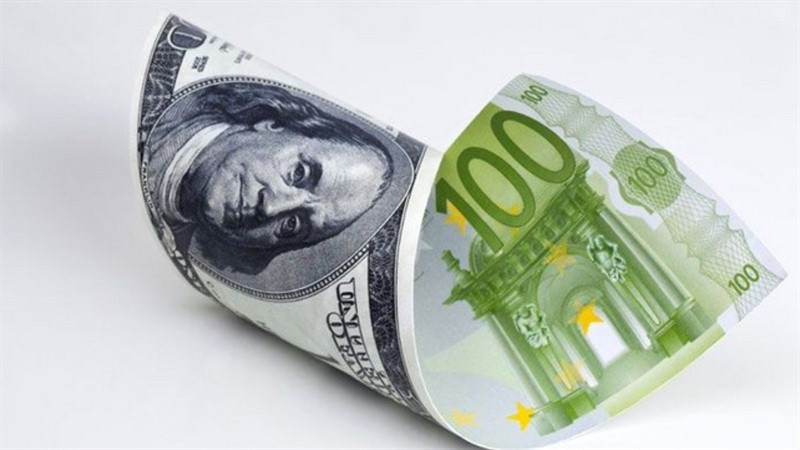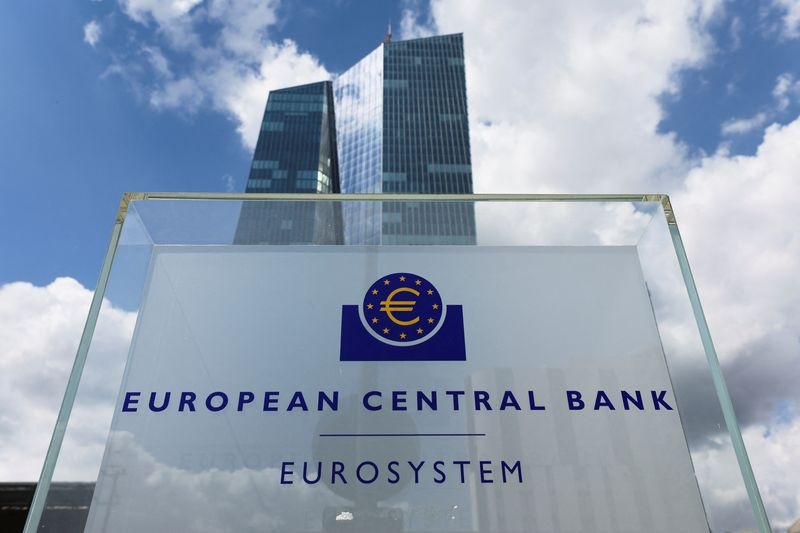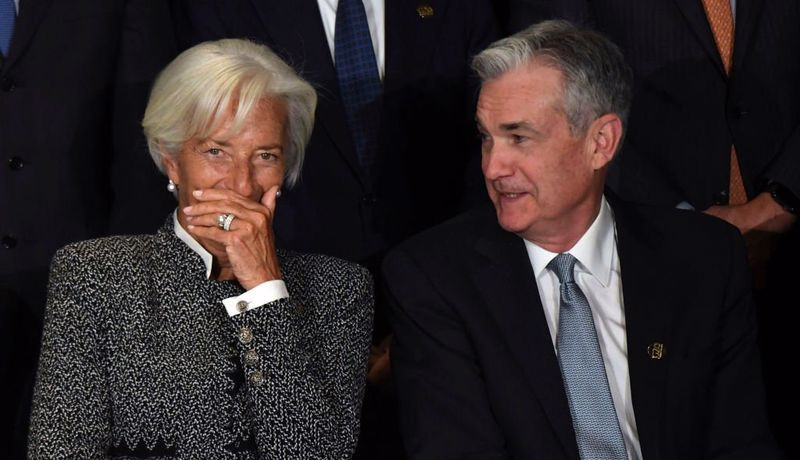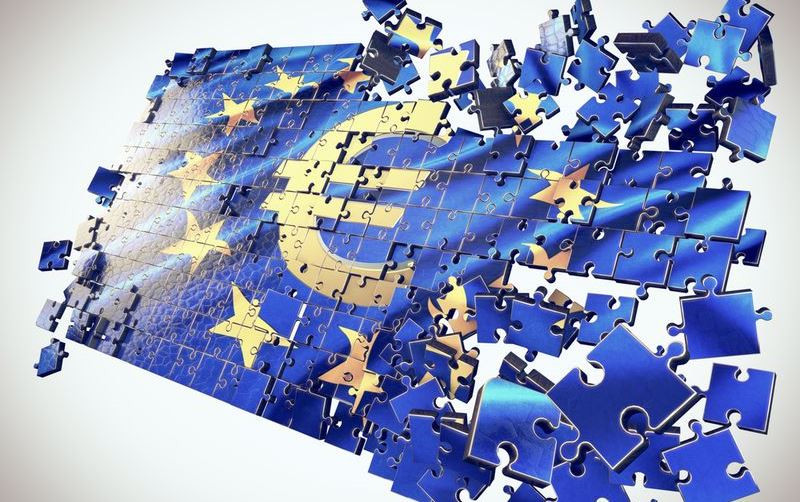
The EUR/USD pair is still trading in a range, the lower limit of which is the October low in the area of 0.9630, and the upper limit is the monthly peak in the area of 0.9999.
Recently, the euro has been attracting buyers in recessions under the talk that the European Central Bank may reduce its huge package of bonds worth more than €5 trillion. In addition, expectations are growing for another major rate hike in the eurozone later this month.
The ECB will go for another 75 basis point rate hike at its October 27 meeting, trying to contain inflation, which is five times higher than the central bank's target, analysts polled recently by Reuters predict.
On Wednesday, Eurostat reported that in September, consumer prices in the eurozone, according to the final estimate, increased by 9.9% year-on-year. Preliminary data indicated an increase of 10%, and experts generally did not expect a revision of the estimate.
Nevertheless, the pace of consumer price growth in the currency bloc accelerated compared to 9.1% in August and became the highest for the entire time of data calculation.
As in many countries of the world, inflation in the eurozone has increased sharply due to the rapid jump in energy prices.
According to Intesa Sanpaolo, the worst impact of the energy crisis on the household sector will manifest itself in the fourth quarter of 2022 and the first quarter of 2023, when gas demand will be seasonally higher.
Therefore, many economists expect the ECB to be more aggressive in tightening policy ahead of winter.
The ECB will raise its key rate to 2% next Thursday, according to the overwhelming majority of strategists who took part in a Reuters poll conducted on October 12-18 among more than 60 specialists.
Three-quarters of respondents who answered an additional question, namely 27 out of 36, said that the ECB should choose to raise the rate by 75 basis points, while two noted that it should be an increase of 100 basis points.

"Inflation is too high. A rapid increase in rates is needed. However, the ECB also needs to monitor bond spreads, so an increase of more than 75 bps seems unlikely," ANZ analysts believe.
At the same time, the markets are practically convinced that the Federal Reserve will continue to raise interest rates at a faster pace to curb inflation, and they put in quotes an almost 100 percent probability of another 75 bps rate hike at the November FOMC meeting.
These expectations were confirmed by the strong US inflation report released last week and recent hawkish comments from several Fed officials.
The overall consumer price index in the country increased by 0.4% last month and 8.2% more than a year earlier.
In his speech on Wednesday, the head of the Fed Bank of Chicago, Charles Evans, stressed the need for further actions by the US central bank.
"We want to make sure that we are conducting monetary policy at a sufficiently tight level so as not to provoke inflation - and we are trying to reduce it – that is our goal at the moment," he said.
Fed policymakers have made it clear that they will continue to raise rates until they see a slowdown in inflation, even though they recognize that higher borrowing costs are likely to lead to slower economic growth, a weaker labor market and an increase in the unemployment rate.
If the Fed is able to bring inflation under control in conditions when the unemployment rate is below 5%, it will be a rather unexpected but good development, said Evans.
Speaking at the University of Virginia, he noted that the forecasts made at the September FOMC meeting, suggesting an increase in the key interest rate to 4.6% next year and an increase in the unemployment rate to about 4.4%, may correspond to conditions when the economy is running below trend, but does not fall into recession.
"If it is possible to achieve this with unemployment below 5%, it will be very unusual, but good," said Evans.
A day earlier, the president of the Fed Bank of Minneapolis, Neel Kashkari, said that the US central bank may have to raise the key rate above 4.75% if core inflation does not stop growing.

"The latest CPI data confirm the concerns of senior Fed officials that inflation is more persistent than previously expected. Even if energy prices calm down over the next few months, inflation is likely to decline slightly and remain well above the Fed's 2% target," Commerzbank analysts said.
"The minutes from the last FOMC meeting reflect the Fed's determination to bring inflation back under control. To achieve this goal, monetary policy must become adequately tight, and the Fed will have to adhere to this course of action even in the event of a weakening of the labor market. Thus, a further significant increase in rates is almost beyond doubt. We still expect another significant increase in rates by 75 bps at the meeting of the US central bank in early November and predict that rates will peak at 5%," they added.
The market firmly expects the Fed to raise its key rate by 75 basis points on November 2 and set the final rate at 4.9% next spring, ING strategists say.
"As long as the Fed maintains its hawkish position (we assume that until 2023), dollar corrections should be short-term. We expect USD consolidation near current levels and maintain a bullish view of the US currency until the end of the year," they said.
"Earlier this week, we thought that a sharp drop in European natural gas prices could give the euro a boost. However, so far the single currency has not been able to achieve a significant rise against the dollar. Therefore, we can conclude that the price dynamics of the EUR/USD pair was weak. The 0.9850-0.9870 area should restrain any growth and prevent the approach to the key resistance at 0.9970. The 0.9200 level remains our year-end target for EUR/USD," ING said.
The continuing difference in interest rates on both sides of the Atlantic, as well as the prospects for a more aggressive tightening of the Fed's policy compared to the ECB, continue to serve as a tailwind for the dollar and limit the euro's growth.

While the US central bank has been raising rates since March, its European counterpart carried out its first rate hike only in July.
At the same time, the final rate in the eurozone may be lower than in the United States.
Commerzbank believes that the ECB will raise the deposit rate to 3% by the first quarter of next year.
"The ECB's signals that it wants to reach a neutral interest rate by the end of the year (which it now probably sees at 2%) and is ready to go beyond it, speak in favor of a noticeable increase in rates in the near future. This readiness is likely to increase in the coming months, as the central bank may significantly increase its inflation forecast," the bank's specialists noted.
"Starting next spring, the ECB will probably suspend the process of raising interest rates for about a year, since, on the one hand, the recession expected by many should manifest itself in GDP data, and on the other hand, the deposit rate at 3% should be noticeably higher than the neutral level from the ECB's point of view," – they added.
Since June, the Fed has started to reduce its balance sheet by $47.5 billion per month, increasing this value to $95 billion in September.
Meanwhile, ECB officials only this month discussed the timing of the reduction of part of its bond portfolio, suggesting that it will begin sometime in the second quarter of 2023.
"There is a lot at stake in the eurozone when it comes to QT. The focus is on the gap between yields in Italy and Germany. But apart from spreads, there are also concerns about further market volatility, especially when public financing plans in the eurozone are under increasing growth risk," ING analysts said.
Germany last month unveiled a €200 billion package funded by new borrowing to help cushion the blow from the energy shock.
According to Bank of America estimates, the net supply of European government bonds will grow to almost €400 billion next year, which is a record high and significantly exceeds the expected €120-145 billion this year.
"This significantly complicates the practical implementation of QT by the ECB," Bank of America believes.

In addition to PEPP reinvestment, the ECB has also launched a Transmission Protection Instrument (TPI) to prevent monetary policy fragmentation in the euro area.
AllianceBernstein strategists noted that they are skeptical about how the ECB can achieve QT with such safeguards.
"If they have eurozone backstop-supported returns, it will be very difficult for them to move into the QT environment without a peripheral spread shock, especially in Italy," they said.
In addition to the divergence in the monetary policy of the Fed and the ECB, the fact that so far the US economy seems to be doing well, while the economic situation in the eurozone is far from rosy, plays in favor of the dollar against the euro.
Although the ZEW report for October published on Tuesday pointed to a smaller-than-expected deterioration in economic expectations in Germany, the assessment of the current situation turned out to be more pessimistic: the indicator fell to -72.2 points.
Such levels were last observed only in the crisis years of 2009 and 2020, ING analysts say.
Meanwhile, US industrial production data for September released on Tuesday showed a 0.4% month-on-month increase versus a 0.1% increase forecast. At the same time, the utilization of production capacities in the country increased to the high since 2008, 80.3%.
As for the technical picture, according to Societe Generale specialists, the peak formed earlier in October at 1.0000 is the nearest resistance for EUR/USD.
Failure to overcome this level will mean the continuation of the downward trend. In this case, the pair will head lower to a 20-year low at 0.9535. Its break would extend the decline towards 0.9380. Further, the levels of 0.9200 and 0.9150 may come into play, the experts noted.
 English
English 
 Русский
Русский Bahasa Indonesia
Bahasa Indonesia Bahasa Malay
Bahasa Malay ไทย
ไทย Español
Español Deutsch
Deutsch Български
Български Français
Français Tiếng Việt
Tiếng Việt 中文
中文 বাংলা
বাংলা हिन्दी
हिन्दी Čeština
Čeština Українська
Українська Română
Română

